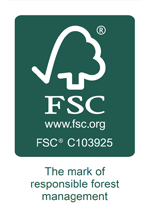Introduction
Flexographic printing is a form of printing that uses a flexible printing plate. The image area is raised on the plate, and ink is transferred to the substrate by means of pressure or suction. Printing occurs on the underside of a rotary press cylinder which in turn presses against a blanket cylinder covered with rubber. The web passes between these two cylinders as they rotate at high speeds.
Flexographic printing is a form of relief printing.
Flexographic printing is a form of relief printing. In other words, it’s a way of laying down ink on the surface of your substrate that gives it a raised appearance. In flexo, this process involves making use of rollers and plates to transfer the image from paper or film onto the substrate. The rollers apply pressure while transferring the ink, leaving behind an impression in its wake as they move over each section. Once one sheet has been printed on both sides and cut into individual pieces (called die cuts), it can be assembled into something like a magazine cover or packaging.”
One advantage of flexo printing over gravure and offset is that it uses a flexible plate, which means it can be used on curved surfaces.
Flexo printing is a relief process, which means it uses a flexible plate. This makes it possible to print on curved surfaces without losing quality or having any jams occur. Flexo technology is great for packaging and labeling applications, such as coupons or rolls of labels. It’s also used in the production of tags and stickers, labels for products with irregular shapes (such as bottles), and much more.
Flexo printing is widely used for packaging and labeling applications.
Flexographic printing is widely used for packaging and labeling applications. Flexo printing is also used to produce coupons, invoices, tags, tickets and other specialty products. The flexographic printing process uses a rubber plate to transfer ink to the substrate via a mesh ribbon or belt. This method creates high-quality images that are durable enough for use in many different environments.
Because flexo printing is a relief process, the image carrier must have a raised image area.
Flexographic printing is a relief process. The image carrier must have a raised image area. This is accomplished by using a flexible plate, which can be made of rubber or plastic. (Flexible plates are also known as “rubber plates”.)
The image carrier is run through the flexo press similar to any other printing process. A fountain solution containing pigments and/or dyes that are transferred to the substrate inks up or coats the surface of the plate as it passes through different nip stations on its way through the press.
Flexo printing machines are generally equipped with a device called an impression cylinder which presses the web material against the flat-surfaced substrate and therefore transfers the ink.
Flexographic printing is a relief process that uses rollers to transfer ink to the substrate. The impression cylinder presses the web material against the flat-surfaced substrate and therefore transfers the ink. Flexo printing is used for packaging and labeling applications where large amounts of text are needed, such as on packages or other types of containers.
The popularity of flexo in the printing industry is due to its speed, cost and reproducible quality.
Flexographic printing is a relief process that uses an inked plate to transfer ink onto various substrates.
Flexographic printing is used for packaging and labeling applications. It is also used for curved surfaces, high-quality printing, short runs (10K or less), short lead times and fine detail work. Flexography was invented by Michael Friedländer in Germany in 1868 and has been the dominant method of commercial printing since it was introduced at that time.
Conclusion
This article has provided a basic overview of flexographic printing as well as some of its advantages and disadvantages. Flexo is used primarily for packaging and labeling applications because the image carrier can be curved. However, this process is not without its drawbacks. It requires more ink than other processes do, which makes it more expensive than other methods such as offset or letterpress printing. In addition, flexo printing machines are large and expensive compared with other types of presses like rotary presses or letterpresses.


